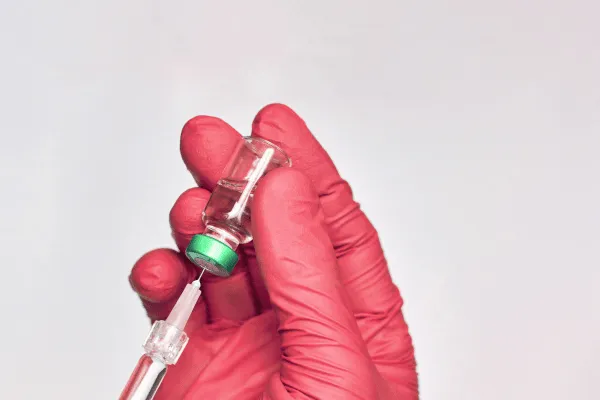Adam Sewell, M.D.
RESOURCES

GANGLION IMPAR BLOCK
Performed by top Pain Management doctors in Merritt Island & Melbourne, Arkansas
A ganglion impar block is an excellent treatment for chronic, neuropathic perineal pain from visceral and/or sympathetic pain syndromes, especially if they arise due to malignancy.
If you have vague, perineal pain that is hard to pinpoint, and is frequently accompanied by sensations of burning or urgency, you may benefit from a gangliar impar block. However, since the symptoms of burning and urgency, especially if their associated with urination or defecation, may be due to a secondary medical issue, it is imperative that you, first, consult your general practitioner to make certain you are not experiencing perineal area pain from one of these other causes.
Since the ganglion impar receives afferent pain fibers from the perineum, distal rectum, anus, distal urethra, vulva, and distal third of the vagina, this block has the potential to alleviate pain that originates from the regions mentioned above. The most recent literature shows that ganglion impar blocks have, also, been used successfully to treat non-malignancy-associated perineal pain from various conditions, including sacral post herpetic neuralgia, spinal cord malformations, and failed back surgery syndrome, etc… Emerging evidence also suggests that, due to its sympathetic nerve irritation, a ganglion impar block may provide relief to patients with perineal hyperhidrosis (excessive sweating).
Perineal Pain originating from:
Perineum
Distal rectum
Anus
Distal urethra
Vulva
Distal third of the vagina
Perineal Pain secondary to:
Cancer that metastasized to perineum (cervical, prostate, testicular, colorectal etc.)
Sacral post herpetic neuralgia
Postsurgical thrombosis of perineal veins
Spinal cord malformations
Vaginal protrusion
Failed back surgery syndrome
Testicular ablation
Miscellaneous:
Perineal hyperhidrosis
Anatomy:
The ganglion impar is the only unpaired autonomic ganglion in the body. It marks the end of two sympathetic chains. It is located in front of the sacrococcygeal joint in the retro peritoneum. However, research has revealed that the location, shape, and size of the ganglion impar are variable (Oh et al. 2004). After performing anatomical dissections on 50 sacra and coccyges, it has been discovered, that the location of the ganglion impar can range from the sacrococcygeal junction to approximately 10mm in front of the tip of the coccyx. The majority of the ganglia impar are located approximately 25-30mm in front of the tip of the coccyx .This anatomical variation may contribute to the possible inefficacy of the ganglion impar nerve block in some patients.
The ganglion impar receives pointed pain fibers from the perineum, distal rectum, anus, distal urethra, vulva, and distal third of the vagina. This block can potentially alleviate pain originating from the above mentioned regions. The impar ganglion’s postganglionic fibers pass along the gray rami communicantes to the sacral and coccygeal spinal nerves.
Procedure:
Since its first implementation, via the horizontal approach, researchers continue to introduce modified techniques that attempt to maximize the ease of performing this block, while maintaining patient safety and increasing the chance of maximal pain alleviation for their patients (Plancarte et al. 1990).
Some of these modified techniques include: techniques using fluoroscopic guidance or ultrasound guidance, approaches using the transsacrococcygeal ligament approach, the transcoccygeal joint approach, the paramedial approach, the paracoccygeal corkscrew approach, and using a curved needle technique, or needle-inside-needle technique. Of the many approaches, the transsacrococcygeal approach remains the most popular.
With this technique, your lower back and intergluteal cleft and will be prepped and sterilized before local anesthesia is administered. When your skin is adequately anesthetized, the needle will be advanced under fluoroscopy guidance. This will give the physician correct needle placement. Its correct placement will also be confirmed by a contrast dye. Once positioned properly, either a diagnostic block (to determine if your perineal pain is visceral or somatic), or a therapeutic block, will be performed. When profound pain relief has been achieved, the block is considered successful.
Local anesthetic is usually administered for diagnostic ganglion impar blocks. This is the same for patients that do not have cancer-related pain. For patients who have a documented response to the administration of local anesthetic onto the ganglion impar, a therapeutic block is administered with a neurolytic agent like phenol. Radioablation of the ganglion impar is another treatment that can offer longer-lasting pain relief.
The procedure usually takes less than 15 minutes. Your physician will, sometimes, recommend intravenous sedation to make the procedure more comfortable. Your physician will monitor your pain, and vital signs (pulse, blood pressure, temperature) during and after the procedure.
Benefit:
Ganglion impar block is a short, minimally invasive procedure treating, neuropathic perineal pain from visceral and sympathetic pain syndromes. This is especially true if they are secondary to malignancy. Published literature also highlights significant pain relief. This can also be achieved if the pain is of nonmalignant origin and originates from one of the organs, sending afferent fibers to the ganglion impar.
Risk:
There are very few risks associated with this procedure. In fact, current literature doesn’t note any major complications reported from this block (Plancarte, et al. 1993). Only one case of epidural contrast spread within the caudal canal. However, needle repositioning quickly resolved the problem without any harm to the patient (Plancarte et al. 1990).
Despite these published statistics, the theoretical risk of this procedure exists and includes: Bleeding with needle displacement, especially into your retroperitoneal space, nerve injury and/or paralysis, puncture of surrounding organs (including rectum) and puncture of adjacent vessels. Risks resulting from the anesthetic include – drug allergy and seizure (if the medication is injected into a blood vessel). Additionally, there always exists a risk of infection with any penetration of skin and soft tissues.
Finally, due to where the impar ganglion is situated, an ineffective block is, also, a risk in some patients. If no relief is obtained after your physician has placed the block through the transsacrococcygeal approach, he or she may decide on another approach to best accommodate your anatomy (transcoccygeal joint approach, paramedial approach etc.)
Outcomes:
Ganglion impar block is an excellent treatment for chronic, neuropathic perineal pain from visceral and sympathetic pain syndromes stemming from malignancy.
In 1990, Plancarte et al. not only described the ganglion impar technique, but also demonstrated its helpful results in cancer patients. Patients with advanced cancer (cervical, endometrial, bladder, colon, and rectal) with perineal involvement, who had little response with pharmacotherapy, received a neurolytic ganglion impar block. After the block, nearly eight patients experienced total relief of pain, and the remaining patients reported a 60-90% reduction in their pain.
Agarwal-Kozlowski et al. (2009) evaluated the efficacy of the ganglion impar block on various types of perineal pain (including malignancy, post-surgical thrombosis of perineal veins, postherpetic neuralgia, spinal cord malformations, vaginal protrusion, failed back surgery syndrome, testicular ablation, and what was deemed as perineal pain of unknown origin) in 43 patients. Many of the patients reported immediate and lasting pain relief through the 4-month follow up. This success has continued through subsequent patient observation and experiences.
For some people, the benefits of a ganglion impar block can be temporary, and the extent and duration of pain relief can vary from person to person. Some tend to have relief for weeks, while others, experience a complete remission of pain for years at a time. Fortunately, this is a low risk procedure, and if the first attempt is not successful, it can be repeated.
If you are suffering with chronic perineal pain or pain that you or physician believe is originating from the perineum, distal rectum, anus, distal urethra, vulva, and distal third of the vagina, the ganglion impar block may be an excellent alternative treatment for you.
Journal Articles:
Why Choose Adam Sewell, M.D.?
we believe in treating the whole person, not just the symptoms. Our approach to medicine is integrative, combining the best of modern science with personalized care to deliver real, lasting results. We work closely with each patient to develop a customized treatment plan that aligns with their health goals and lifestyle.
Patient-Centered Care
We listen to your concerns, understand your goals, and work with you to create a treatment plan that's right for you.
Advanced Technology
We utilize the latest medical technologies and techniques to provide you with the most effective treatments available.
Expertise You Can Trust
Dr. Adam Sewell is a triple board-certified physician with a passion for helping patients achieve their best health. His expertise in regenerative medicine, hormone therapy, and performance medicine ensures that you're in capable hands.
Comprehensive Health Solutions
From gut health to cognitive function, joint regeneration to hormone optimization, our services are designed to address every aspect of your health.

Ready to Take the Next Step?
If you're ready to transform your health and live your best life, we're here to help. Contact us today to schedule a consultation and discover how Adam Sewell, M.D. can help you achieve your health goals.
Contact Us
Please feel free to reach out to us at adam@adamsewellmd.com or kindly complete the form. Rest assured, we will respond to your inquiry at the earliest opportunity.
Our Locations

Stay in the Know with Our Newsletter!
Copyright © 2025 Adam Sewell M.D., All rights reserved.
